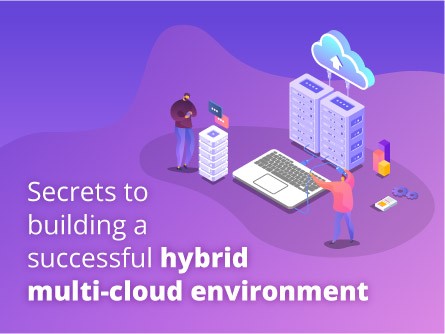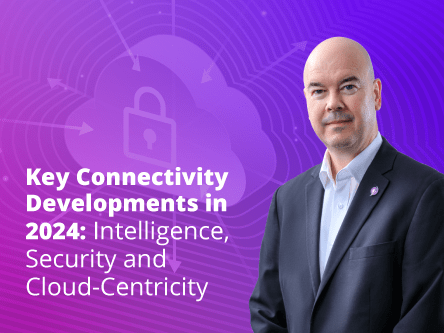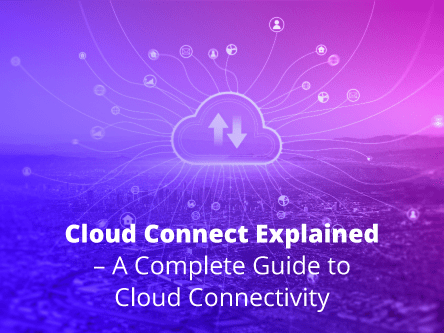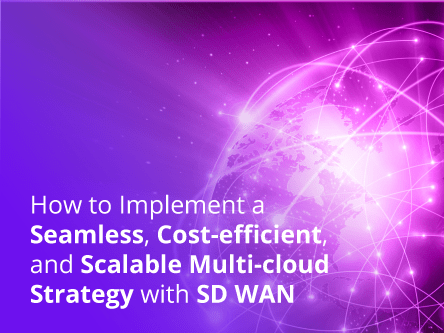Just recently, an Amazon AWS US-EAST-1 data centre in North Virginia experienced a power failure, and the backup generators started failing at around 6:00am, leading to downtime for 7.5% of the EC2 instances and EBS volumes. The outage wreaked havoc for many businesses.
While cloud-centricity is becoming the future, after witnessing outages that should never have happened, the key to having restful sleep every night is even more obvious now: pursue a hybrid model involving backups across multiple cloud systems and colocation facilities.
Of course, therein lies the caveat: data centre connectivity can be cumbersome across a hybrid multi-cloud infrastructure.
Hybrid multi-cloud pain points
The hybrid multi-cloud environment is a heterogeneous mix of interconnected ecosystem consisting public clouds and data centres from different vendors, connected by different network operators.
There is no doubt that its management places a heavy burden on enterprise IT. Let’s just consider what this management involves.
Each cloud service provider (CSP) will have different processes and platforms, so enterprise IT needs technical knowledge in connecting to each cloud. Different network operators will have its own billing system, pricing model and payment options, which must all be navigated and monitored to maintain control over costs and deployment options.
The connectivity model has to mirror the commercial model of the cloud-based services and applications its supports, otherwise any scalability advantages will be diminished.
Enterprises must also consider the variety of options for connecting to the cloud and how much visibility they have over the network, especially when managing an environment with multiple clouds across regions.
Global connectivity is the secret sauce
With the management of a hybrid multi-cloud infrastructure being so complex—especially if we include the public Cloud—the key is to employ a global connectivity provider.
And the result is having better support in the navigation of the connectivity concerns with a full end-to-end solution and removing the headaches of complexity. This may sound obvious, but it effectively frees a business to fully focus resources on core markets and competencies instead.
For instance, PT Visionet Data Internasional (VisioNet), a leading IT Managed Services company in Indonesia, needed a solution for interconnecting data centres with direct access to multiple CSPs to expand its cloud offerings.
Through the use of scalable, private and secure direct connections between data centres regionally, and with access to a software-defined network (SDN) fabric, VisioNet gained the capability to freely connect their services to global data centres and CSPs to accelerate the delivery of its cloud-managed services for customers in Indonesia.
Common metrics
The complexities, unique circumstances and needs of every organisation’s IT often have to come to grips with the realities of business: senior management buy-in, budget allocations, and availability of skilled resources to manage whatever IT strategy is developed.
Regardless, some common metrics of network connectivity can be used to define a high probability of success that will drive support at every level:
- A successful IT ecosystem that spreads its risks across multiple cloud vendors and physical data centres.
- The complexity from the above strategy can be resolved through the lubricant and glue that provides optimised interconnection of the disparate data centre environments.
- With the right hybrid multi-cloud model in place, the clear way to interconnect in an open, programmable way is using an SDN platform to deliver network services over a private carrier-grade backbone.
- Thus, with the benefits of SDN such as on-demand connectivity, application programming interface (API) and automation, the enterprise establishes a resilient, agile and cost-effective network fabric that is programmable for maximum business agility and intelligence.
- With greater network programmability, enterprises, over-the-top (OTT) players, content providers, Anything-as-a-Service (XaaS) Providers and managed service providers can easily build cloud-centric DCI ecosystems and create new competitive advantages on demand.
Cloud-based applications and services, distributed IT systems and processes are being adopted at unprecedented rates.
The need for continual enterprise transformation and the borderless nature of the global economy, are all driving new opportunities and threats—all of which can be addressed with a hybrid multi-cloud strategy delivered by a seamless and simple connectivity model.
Enterprises sitting on the sidelines can now explore hybrid multi-cloud strategy without having to worry about the connectivity links powering it.
As the saying goes, “One thing that makes it possible to be an optimist is if you have a contingency plan for when all hell breaks loose.” — Randy Pausch, Professor of Computer Science, Carnegie Mellon University.







